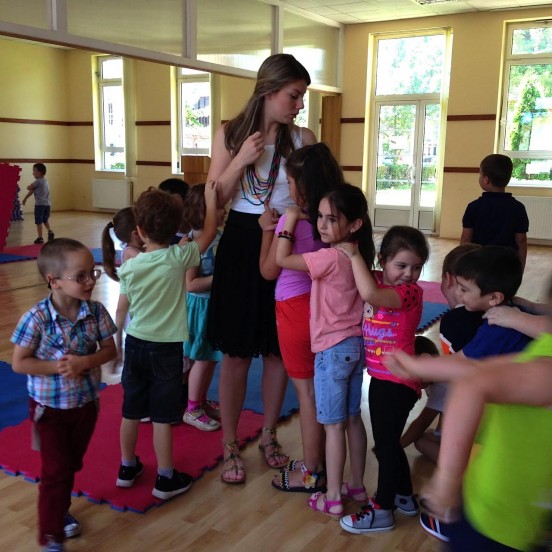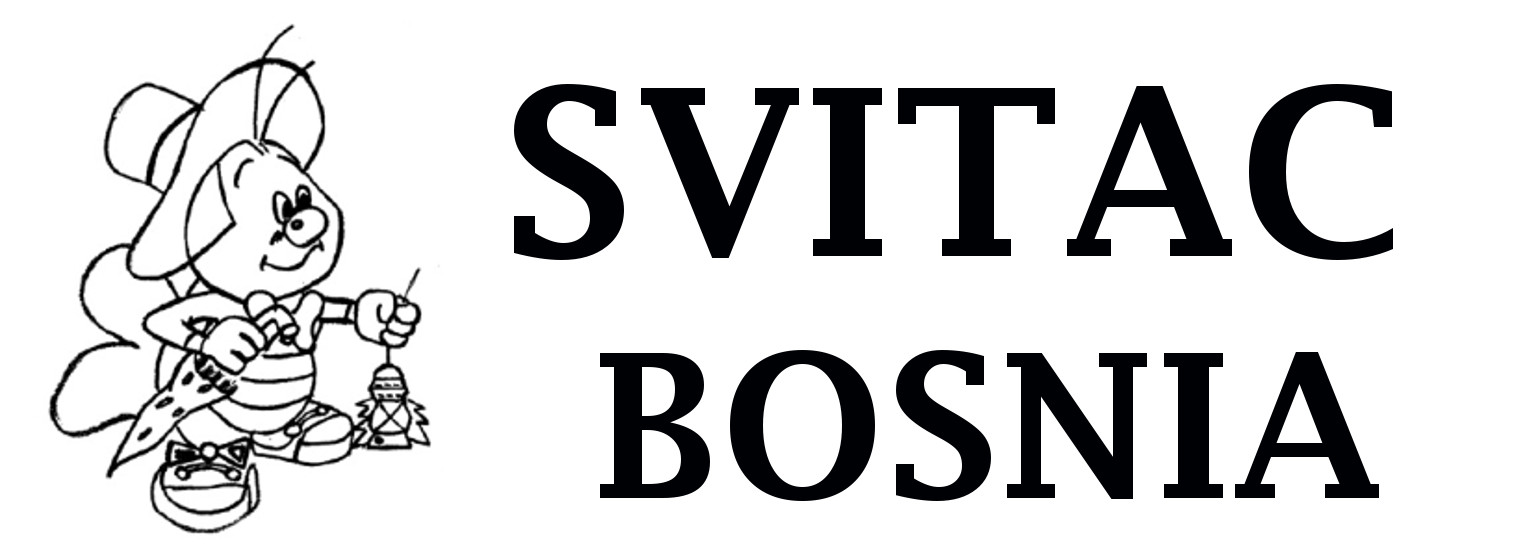
Thirty-six hours in Brčko
Thirty-six hours in Brčko is a blog-post written by Firefly International Trustee Jane Jackman during a June 2015 visit to Svitac.
It was the briefest of visits to Brčko to see for myself – as the newest Firefly International trustee – how Svitac works ‘on the ground’, to meet the staff and volunteers, and of course to see some of the children who benefit from the generosity of Firefly’s donors.

Brčko is set in a sunflower growing region at the northern tip of Bosnia where it literally forms a bridge between Croatia and Serbia. The approach from Belgrade is via border crossings from Serbia to Croatia, Croatia to Bosnia, and finally over the River Sava into the independent municipality of Brčko District. ‘It’s complicated’, says our driver as we hand over our passports for the fourth time.
The town itself is somehow surprising. With its domes, minarets and church spires, and cafes lining the pedestrianised boulevard, and its glorious sunsets over the Sava, it’s hard to imagine that some of the fiercest fighting of the Balkan civil war took place here. Much of the population fled. Only when you wander away from the newly built centre – and the war memorial emblazoned with the Bosnian trefoil – do you come across buildings still carrying the scars of war: some left to ruin, others boarded up and overgrown.
The Austrian consulate had occupied one such building, now defaced by graffiti, for over 100 years; they too fled, and never returned.
Then you notice a barefoot child meandering round the tables in one of the outdoor cafes (of which there are too many but how else to make a living?) begging for small change, and a pale, thin woman with a baby doing the same.
Since the war, tourists are still few but for those who do come, the welcome is warm and sincere. ‘Welcome, welcome…why you here?’ When we tell them they say, ‘Oh yes…Svitac…for the children…’ and again, ‘welcome…dobrodosli!’
Svitac…for the children. That says it all. It was true on the day Ellie Maxwell came to this small border town and began working to build bridges across the deep ethnic divides that caused one of the bloodiest conflicts since WWII. And it’s just as true today: Svitac has always been and remains ‘for the children’.
While other NGOs have shifted their goals according to political expediency, Svitac has remained independent and doggedly true to its founding mission, to provide education and opportunity to all young people growing up in this post conflict region, regardless of ethnicity, religion or political affiliation. As Svitac’s director Gordana Varcakovic says, ‘It hasn’t been easy to do that,’ because it’s meant missing out on funding opportunities that other organisations take – and sadly, often misuse.
Which makes supporters of Firefly International ever more vital to the children and young people here, still suffering from high unemployment, and where there is work, low wages. Travel for most is out of the question and – we’re told – beneath the veneer, ethnic differences still divide, further limiting opportunities for the younger generation. One of the young Bosnian volunteers tells us she has to meet her Croatian boyfriend in secret because her family wouldn’t approve of the cross-cultural relationship. And if she left to live and work in Serbia, they would cut her off.
Besides the vital work of building bridges between the ethnic groups living in Brčko, Svitac offers pre-schooling classes, language teaching in English and German, as well volunteering opportunities that will help Bosnian young people like Maja and Milos – our guides for the day – to secure paid work in future, and to broaden their horizons.
Part of that benefit comes from working alongside Firefly recruited volunteers. For me, it’s a privilege to meet our one-year volunteers, Sam from Leeds and John from Bradford, both funded under the European Voluntary Service Scheme (EVS). Amongst other things, the lads currently run English classes and music workshops. All activities at the centre are overseen are coordinated by (the effervescent) Dina Vosanovic.
John is particularly enthusiastic about his time with Svitac. ‘It’s literally turned my life around’, he says. ‘Before I came here I didn’t have the confidence to apply for university but now I’ve had the experience of running workshops and teaching, I think yeah, I can do that!’
Then there are the summer volunteers (three months) who share accommodation in the quiet, residential area between the youth centre and Svitac’s offices, where Gordana works. Sarah, Kate and Catriona are still learning the local language but they tell me about their plans to set up and run their own arts workshops, including dance, film and photography. It’s something to look forward to.
But first they’ll be joining in the summer music camp in the mountains outside Sarajevo. Sanjin, who co-ordinates musical activities, tells me that along with other instruments, they’ll be taking their latest acquisition – the highly popular boomwhackers – donated through Firefly. ‘The kids love them,’ he says. ‘We just need more!’
For the international volunteers, the music camp will be a chance to see more of this beautiful country, and more importantly, for them to get to know their young students better before rolling out their own projects over the summer. When they return to Brčko, they’ll also be launching Firefly’s ‘MyStory’ project…so watch this space!

Jane Jackman has been a Trustee at Firefly International.
A gallery of photos she took from her trustee visit to Svitac follows.
































































